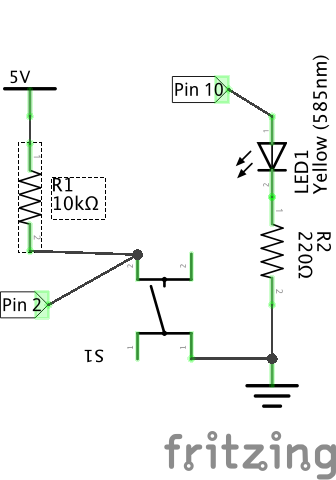


These cookies ensure basic functionalities and security features of the website, anonymously. Necessary cookies are absolutely essential for the website to function properly. Meanwhile, I look forward to perusing and pondering your comments and questions.
Arduino millis catch overflow code#
Also, we will consider why the test on Line 22 of the above code continues to work, even when the currentTime value wraps around to 0. We will discuss the reasoning behind using the millis() function in this way in my next column. The point to note here is that this code will happily continue to work, flashing the LED without any change in delay or any other disruption, even when the millis register overflows back to 0. In particular, observe the test performed on Line 22. Speaking of which…Ĭonsider the following program, which uses the millis() function to turn a LED On and Off again every 100 milliseconds. Even better, it won’t mess up your programs (sketches), so long as you write your code correctly. This doesn’t cause any damage to the Arduino (think of it as being akin to your bedside clock transitioning into a new day at midnight). Once this register reaches 4,294,967,295 in decimal (0xFFFFFFFF in hexadecimal), incrementing it one more time will cause it to overflow and return to 0 in decimal (0x0000 in hexadecimal).ĭon’t Panic! Sit down and take a few deep breaths. The Arduino stores the current millis value in an internal 4-byte register, which is driven by a timer that increments it every millisecond. This is more than enough for most applications, but some of us create projects that run continuously for months or years, so is the 49.71-day limit going to cause us any problems? Since, by definition, there is no sign (that’s what “unsigned” means), this can be used to represent only positive values in the range 0 to (2^32 – 1) that is, 0 to 4,294,967,295 in decimal, or 0x00000000 to 0xFFFFFFFF in hexadecimal.Īs each millisecond is a thousandth of a second, this means we can use our unsigned long value to represent time up to 4,294,967,295 / 1000 (milliseconds) / 60 (seconds) / 60 (minutes) / 24 (hours), which equals 49.71 days. In the case of the Arduino, a variable of type unsigned long occupies four bytes (32 bits) of memory. This returns an unsigned long value, which represents the number of milliseconds (thousandths of a second) that have elapsed since you powered-up your Arduino or since it was last reset. If you’ve been using the Arduino for any length of time, you will almost certainly have used the inbuilt millis() function. In my next piece, for those who like to know the “why” of things, we’ll dive a little deeper into the nitty-gritty details.
Arduino millis catch overflow how to#
One of the most commonly asked Arduino-related questions is how to write one’s programs in such a way that they can accommodate an overflow/wraparound condition in the millis() function.įor those who are of an impatient nature, I’m going to quickly introduce a question and present the answer in this column.


 0 kommentar(er)
0 kommentar(er)
